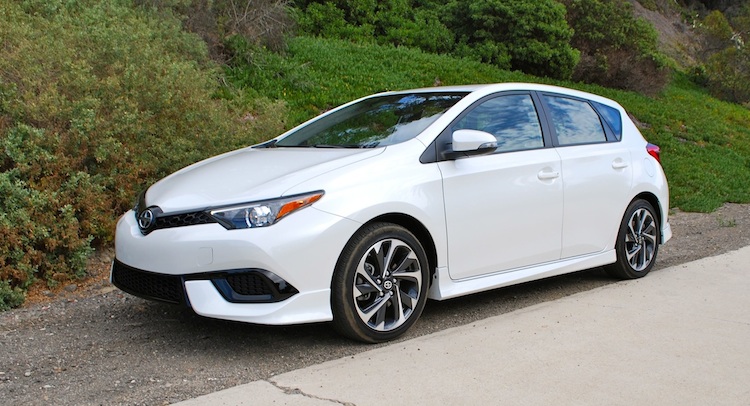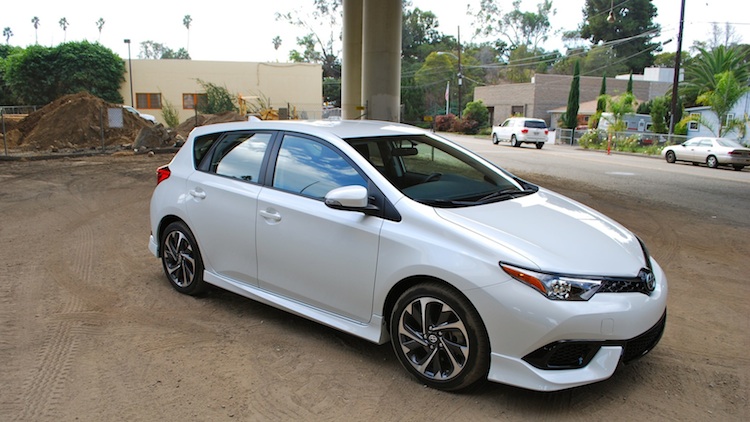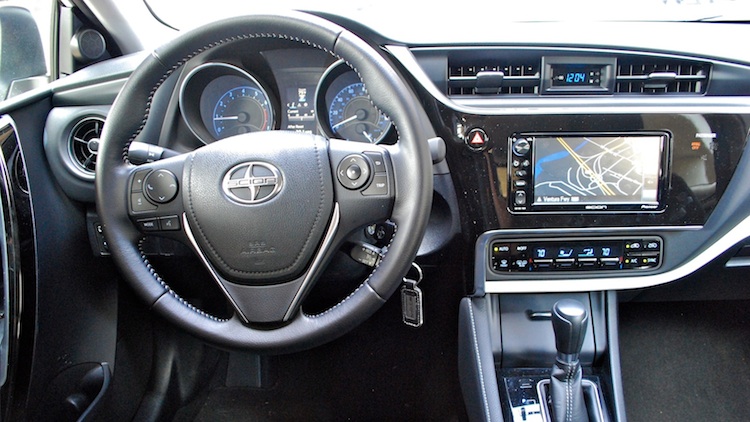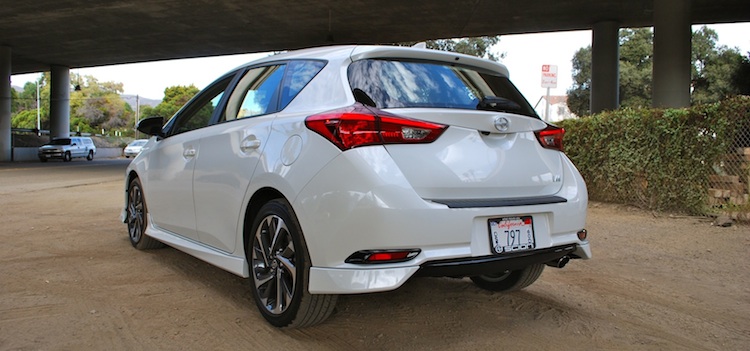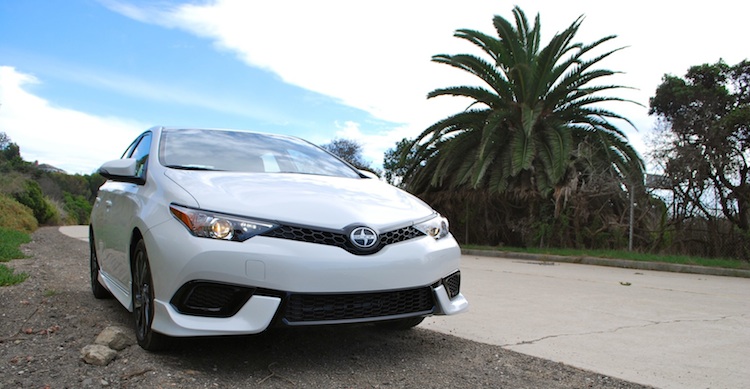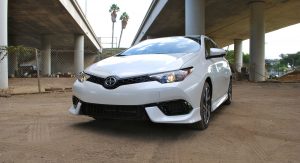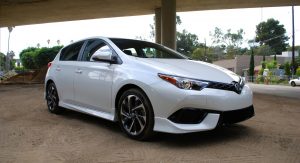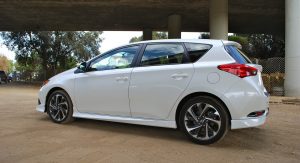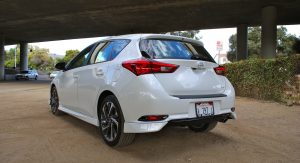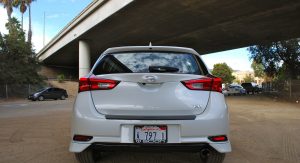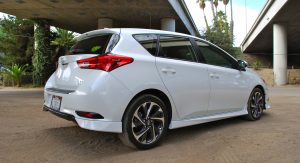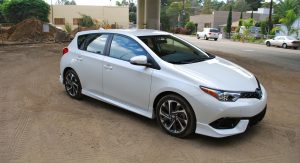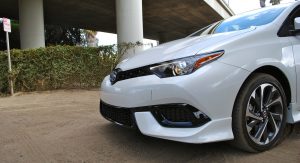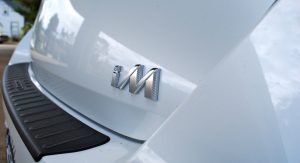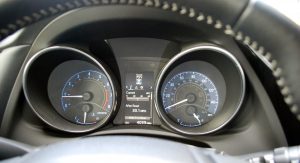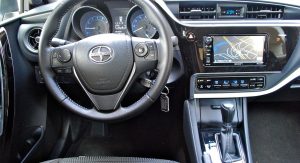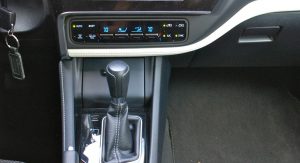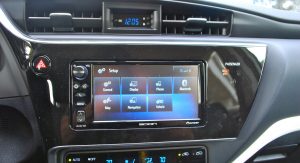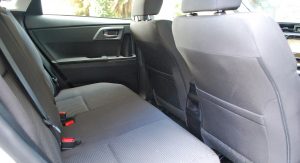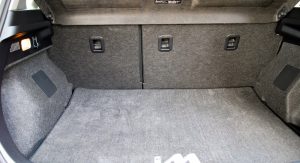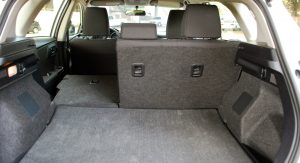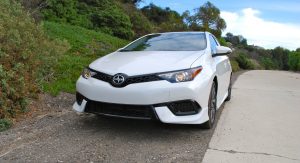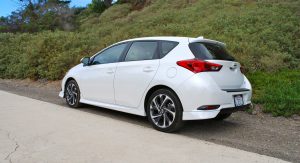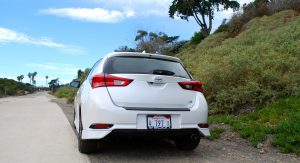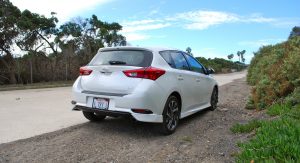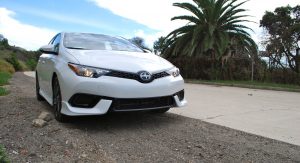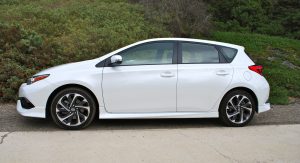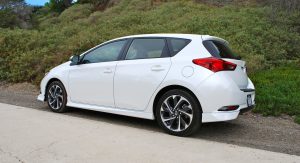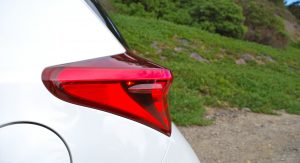The Scion iM is the latest alias for the Toyota Auris or the Toyota Corolla hatchback. Whatever it’s called, this is the biggest sign yet that Toyota – the maker of stoic and traditionally forgettable sedans – has made a car that goes beyond ticking all of the boxes required by a mainstream compact.
A common answer to, “Which new car should I buy because I just got my first real job?” has been the Toyota Corolla. The Corolla is reliable and easy to use, but not much more. And that’s what also makes it a common answer to, “What is the last new car I’m going to buy?”
On paper, the Scion iM looks like it’s a dolled-up version of the same Corolla story. In practice, however, it has so much more character than expected.
Among compact five-door hatchbacks, there isn’t a whole lot of styling variation between various models. The Scion iM is a cross between everything from Hyundai Elantra GT to Volkswagen Golf, which kind of sets up the rest of the car.
Being marketed as a Scion, however, requires the transition from Auris to iM include some pandering to a younger demographic. With that, every iM gets partially blacked-out 17-inch aluminum wheels and a prominent body kit. In white, the iM is a handsome little guy that doesn’t look too outlandish for a job interview at a bank, for example. Some of the brighter colors, however, appeal to the more outrageous of personalities, perhaps. But these are just cosmetic enhancements, after all.
Like the Corolla, the iM’s humble roots and mission in life bleeds through the attempts at visual excitement. There is no dramatically sloping roofline, no shrunken windows (although the one at the back isn’t terribly large). In practical terms, it is the spiritual heir to the first-generation Scion xB, but without the cartoonish appearance of the second xB.
Scion learned the less-is-more theme again here.
With a car targeted at the kids these days, the story inside has to be about technology. For less than $20,000, the iM doesn’t do a bad job. It has basically everything you need and nothing you don’t, whether you’re 22 or 82.
My iM had the optional $990 Bespoke Audio with navigation, a decent system that gets you to where you need to go with minimal screaming, even if using voice commands to enter a destination takes longer than for you to Wikipedia ‘what the hell is a Thomas Guide?’ and actually find your way to your destination.
I could do without the fingerprint magnet that is the vast swath of black plastic around the touchscreen radio and climate controls, but it’s all of higher quality than what’s been in Toyotas in recent memory.
The front seats are not the overstuffed recliners you might be used to in a Corolla. Instead, they’re well bolstered, firm and covered in a decently attractive fabric. How many old Jetta seats did Toyota scrutinize to make these? Compared to the Corolla, there isn’t a surplus of rear-seat legroom, even if headroom is pretty generous.
Compared to a Ford Focus, there isn’t a lot of space in the back with those rear seats up, given the cargo area is somewhat shallow for this class of car. Still, it’s on par with what a more expensive crossover like a Chevrolet Trax would give you. And the Trax is a car that’s trying hard to win over Millennials, too. But because it gets so many fundamentals right, the Scion iM doesn’t have to try nearly as hard.
The key to the iM being a treat is in the way it drives. It’s decidedly un-Toyotalike and that’s a good thing here. Instead of trying to be a junior Camry as the Corolla has done for at least two decades, the Scion iM comes off again like a Golf copy. Which means the steering is more accurate than you’d expect, the car changes direction in a decidedly German way and there’s a definite solidity not found in something wearing a Scion badge that isn’t a rear-drive coupe. This is a fun-to-drive Toyota for less than $20,000.
It’s a shame there isn’t a welcome surprise under the hood. The 1.8-liter four-cylinder musters 137 horsepower, which makes for a pretty zesty hot hatch if this were a Toyota from 1991. As a 2016 model, however, the iM falls well behind the likes of the Golf 1.8T (170 horsepower), Focus (160) and especially the Kia Forte5 SX (201). While relatively smooth, the Scion runs out of power too quickly.
Not helping matters is the optional CVT automatic on the car I drove. I suspect the six-speed manual helps matters, because the Sport mode and manual “shifts” offered by the CVT do wake up the engine a little more than just being in D.
Highway acceleration might be its downfall, but the iM is sufficient in just about every other driving situation. And that’s a start for a compact Toyota.
Scion has long appeared to be a labored marketing attempt from Toyota, and with James Franco driving around its latest models on TV, I was prepared to write the iM off, too.
Yet, the iM is exactly what a car should be for the not-so-big price of $19,995. I’d knock $715 right off the bat and get the five-speed manual because I’m convinced it would improve the driving experience measurably. But even with the automatic, this Scion is a smart buy. The one I drove had some add-ons like the $395 Blizzard Pearl paint, $185 floor mats and the $990 Bespoke Audio System with Navigation to bring the price up to $21,564. Again, not bad.
More telling than its price is how a weak engine and often-frustrating transmission didn’t dampen its appeal too much. While the Golf and Mazda 3 stand notably above the Scion, it makes a better case for itself than the Elantra or Forte and maybe even a Focus. Sure, you’ll miss out on park assist, heated leather seats and smartwatch integration found on the other cars, but then the Scion isn’t a $25,000 compact car. It might even be a better value than that 2016 Honda Civic LX I liked so much recently.
Toyotas have long majored in value, less so on going above and beyond what is asked of transportation. The Scion iM is change and this change is good.
Photos: Zac Estrada/Carscoops







